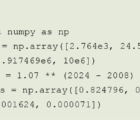
In early 2016 the CAS released the second in its series of monographs, Distributions for Actuaries. The monograph’s author, David Bahnemann, learned how to best convey technical subject matter over the course of 19 years teaching mathematics at the university level. Bahnemann then worked for more than two decades, applying this knowledge to all types of real actuarial problems that actuaries face every day. His monograph has been called a “rare presentation of mathematics that actuaries use whenever distributions are involved.”
Briefly describe Distributions for Actuaries.
My monograph deals with the standard parametric families of probability distributions used by property-casualty actuaries to model the claim count, claim size, and aggregate loss random variables. In addition, it illustrates some basic applications of these distributions in actuarial practice — fitting distributions to claim data; incorporating policy concepts such as occurrence and aggregate limits; and generating pricing tools such as deductible factors and increased limit factors. The fundamental role that moments of limited random variables play in actuarial applications is highlighted throughout the text.
Why did you choose to write about this topic?
Coming to the insurance environment from the academic world mid-career, I would have found such a text on my bookshelf a great help as I tackled those early actuarial projects assigned to me. This work was the result of my later attempt to provide such a reference.
Who is your intended audience?
The monograph would be useful, I think, to students first learning this specialized area of probability, and then would be a handy reference later on, when they are faced with a custom project involving distributional applications.
What makes the material in this monograph unique?
A distinctive feature of the work is its traditional mathematical textbook format, including more than six dozen textbook-style examples designed to illustrate the basic concepts. Moreover, each chapter concludes with a generous supply of problems (over 175 in all) that enhance the theoretical aspects of the text and offer additional applications of the basic ideas.
Since this monograph could serve as a desk reference for practicing actuaries, do you have any suggestions on the best way to take advantage of the material?
Of course, the monograph provides a handy reference for a variety of distributional formulas; a review of the examples and problems might suggest to the reader faced with a pricing project some approaches to problem solving and could help stimulate the creative process.
Do you have any parting thoughts?
I am grateful to the Casualty Actuarial Society for publishing my work and making it available to the actuarial community, and I sincerely hope that many of them will find it useful.
 The CAS Monograph Series showcases CAS members’ extensive specialized expertise, helping to raise the performance standard for property and casualty actuaries through insightful research. The monographs represent just one way that the CAS provides its members with access to relevant information, research and resources that they can apply directly on the job to advance in their careers.
The CAS Monograph Series showcases CAS members’ extensive specialized expertise, helping to raise the performance standard for property and casualty actuaries through insightful research. The monographs represent just one way that the CAS provides its members with access to relevant information, research and resources that they can apply directly on the job to advance in their careers.
If you have an idea for a monograph, please visit the Monograph Submission Guidelines page at https://www.casact.org/pubs/monographs/index.cfm?fa=monographs-guidelines.












